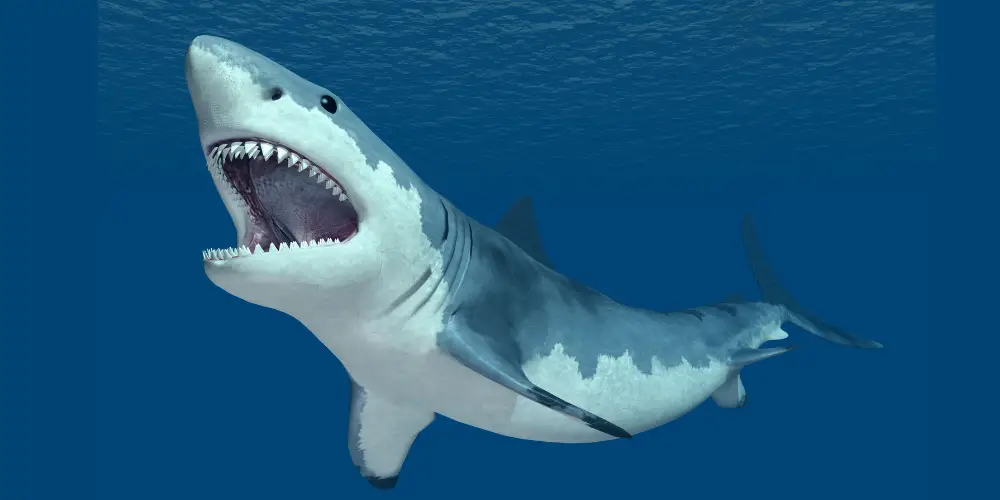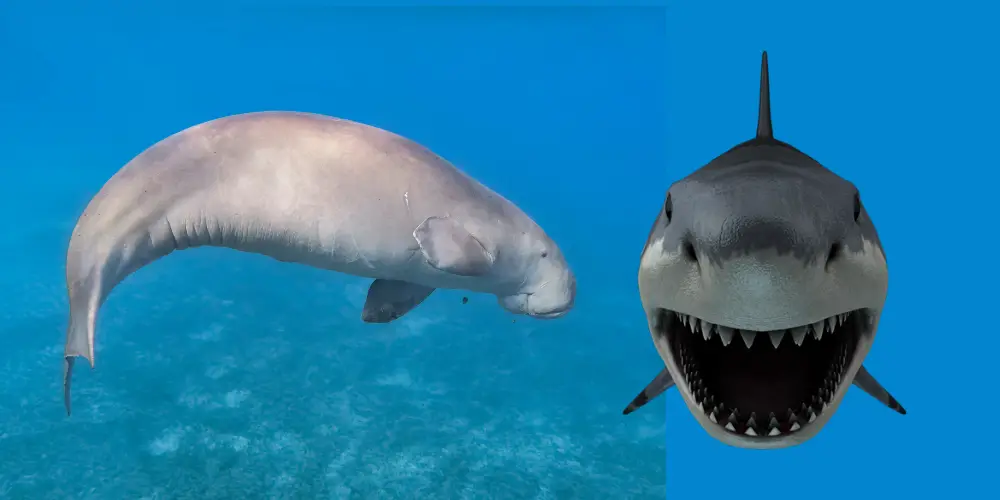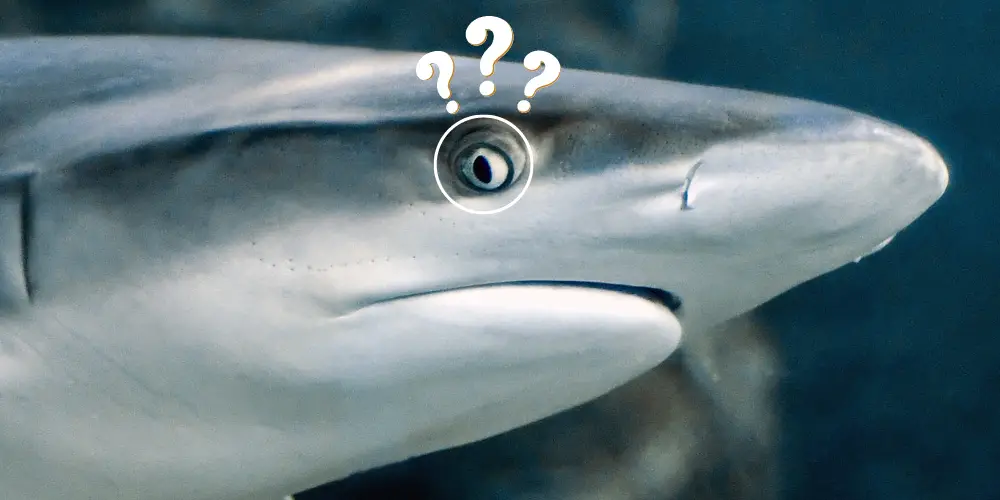Do sharks yawn? This captivating question has captured the curiosity of both scientists and shark enthusiasts alike.
In this comprehensive article, we’ll delve into the enigmatic world of sharks and uncover the truth behind their yawning behavior. The answer to whether sharks yawn is not as straightforward as one might think.
Sharks display behavior similar to yawning but different from humans or other animals. Rather than an involuntary mouth opening and deep breath, shark “yawning” is a maintenance behavior for repositioning jaw elements.
To further understand this phenomenon, we will examine the differences between yawning and mouth gaping in sharks, explore the purpose of these behaviors, and investigate the variations among different shark species.
Additionally, we will discuss the importance of studying shark behavior in terms of conservation, human-shark interactions, and the ecological roles these fascinating creatures play in marine ecosystems.
Before diving into shark behavior, let’s define some key terms mentioned in the article:
Apex predators are animals at the top of their food chain, with no natural predators. Sharks are considered apex predators in marine ecosystems, crucial in maintaining balance and biodiversity.
Ecological roles: The specific functions and contributions of a species within its ecosystem, such as controlling prey populations, recycling nutrients, or influencing habitat structure.
Differences Between Yawning and Mouth Gaping in Sharks
Yawning and mouth gaping may appear similar in sharks as they both involve an extended mouth opening but serve different purposes.
Yawning in Sharks
As mentioned earlier, the behavior observed in sharks that resembles yawning is related to jaw repositioning. This maintenance behavior allows the shark to realign its jaw elements, ensuring its bite remains effective for capturing and consuming prey.
Mouth Gaping in Sharks
Mouth gaping, on the other hand, can serve various purposes in sharks. These include:
- Aggression Display: Sharks may open their mouths wide and display their teeth to communicate aggression or dominance to other sharks. This display can act as a warning signal to potential threats or competitors.
- Feeding: Mouth gaping can also be a part of the feeding process in some shark species. For example, basking sharks swim with their mouths wide open to filter-feed on plankton. Other species, like the great white shark, may slowly open their mouths to suck in water and prey, a technique known as suction feeding.
Are there any risks or dangers associated with shark yawning or mouth gaping?
While shark yawning and mouth-gaping behaviors may not directly threaten humans, it’s essential to exercise caution and maintain a safe distance from sharks, especially when displaying aggressive behavior, such as mouth gaping. It’s important to respect sharks’ space and avoid interfering with their natural behaviors.
The Purpose of Yawning and Mouth Gaping in Sharks
The exact purpose of yawning in sharks remains unclear due to the differences in the observed behaviors compared to the traditional definition of yawning. However, several theories have been proposed to explain these behaviors in sharks.
Jaw Repositioning
As previously mentioned, the behavior resembling yawning in sharks is thought to be a maintenance behavior where the shark repositions its jaw elements. This jaw repositioning ensures that the shark’s bite remains effective for capturing and consuming prey.
Brain Cooling
Another possibility is that yawning or mouth gaping in sharks serves a similar purpose as in other animals, such as brain cooling. Although this theory remains speculative, it is an intriguing possibility that warrants further investigation.
Environmental Response
It has also been suggested that sharks may yawn or gape their mouths in response to environmental stimuli, such as water temperature or salinity changes.
This theory proposes that yawning or mouth gaping may help sharks regulate their internal systems in response to environmental changes.
Can shark yawning or mouth-gaping behaviors be linked to their emotional state?
Although the study of shark emotions is still in its infancy, it is currently unclear whether yawning or mouth-gaping behaviors are directly linked to a shark’s emotional state.
Most research suggests that these behaviors are related to physiological or environmental factors. However, further studies are needed to fully understand the complexities of shark emotions and their potential link to yawning and mouth gaping.
Do All Species of Sharks Yawn?
There are over 500 species of sharks in the world, and their behaviors can vary widely depending on their ecology, habitat, and evolutionary adaptations.
As such, it is not clear whether all species of sharks yawn or exhibit similar mouth-gaping behaviors. Some species, like zebra sharks, have been observed yawning to push water over their gills when not swimming, but it is not clear if all species of sharks exhibit this behavior.
A research study investigated the yawn-like behavior in Caribbean reef sharks (Carcharhinus perezi) to gain deeper insights into the causes and functions of such actions. Consequently, Caribbean reef sharks serve as an example of a particular shark species that displays yawning or yawn-like behaviors.
Moreover, mouth gaping in sharks, observed in Caribbean reef sharks and other species, has been theorized to be a form of threat display or a reaction to irritation caused by sharksuckers.
Do other marine animals exhibit yawning or mouth-gaping behaviors?
Other marine animals, such as fish, dolphins, and whales, have been observed displaying yawning or mouth-gaping behaviors. Like sharks, these behaviors can serve various purposes, such as jaw maintenance, communication, or feeding.
Observations and Research on Yawning in Sharks
While there is still much to learn about yawning and mouth gaping in sharks, some observations and research have provided insight into these behaviors.
For example, researchers have documented instances of whale sharks gaping their mouths to expel excess water while filter-feeding.
In another instance, researchers observed a sand tiger shark yawning and speculated that the behavior might serve a social function, such as establishing dominance or signaling to other sharks.
These observations highlight the complexity of shark behavior and the need for further research to understand better the various functions of yawning and mouth gaping in different shark species.
How do researchers study shark yawning and mouth-gaping behaviors?
Researchers study shark yawning and mouth-gaping behaviors through direct observations in the wild, using underwater video footage, and analyzing data collected from tagged sharks.
They may also conduct experiments in controlled settings, such as aquariums or research facilities, to better understand these behaviors.
Shark Yawning Video
The Importance of Shark Behavior Research
Studying shark behavior, including yawning and mouth gaping, is vital for several reasons:
- Conservation: Understanding shark behavior can inform conservation efforts and help protect these important apex predators. As many shark populations face threats from overfishing, habitat loss, and climate change, knowledge of their behavior is crucial for implementing effective conservation strategies.
- Human-Shark Interaction: Gaining a better understanding of shark behavior can help reduce negative interactions between sharks and humans. By learning more about their behaviors, including yawning and mouth gaping, we can better predict their movements and avoid potentially dangerous encounters.
- Ecological Roles: Sharks play essential roles in marine ecosystems, and understanding their behavior is critical for maintaining the health and balance of these environments. By studying their behaviors, researchers can better comprehend their ecological roles and how they interact with other species in the ecosystem.
Conclusion
The study of yawning and mouth gaping in sharks is not only a fascinating area of research but also carries significant implications for conservation, human-shark interactions, and marine ecosystems.
While we have uncovered some intriguing aspects of these behaviors, we must continue exploring this topic and conducting further research better to understand their functions and variations among different shark species.
As we strive to protect these remarkable marine predators, knowledge of their behavior, including yawning and mouth gaping, can inform effective conservation strategies and help mitigate threats they face from overfishing, habitat loss, and climate change.
Furthermore, a better understanding of these behaviors can lead to safer and more positive human-shark interactions, ensuring we can coexist harmoniously with these incredible creatures.
Ultimately, the ongoing study of shark behaviors, such as yawning and mouth gaping, is crucial to maintaining the health and balance of marine ecosystems.
By appreciating sharks’ ecological roles and their complex behaviors, we can work together to safeguard their future and the well-being of the oceans they inhabit.
WORTH A LOOK:
- Do Sharks Have Eyelids? ( Exploring Shark Biology )
- Do Sharks Feel Pain?
- Do Sharks Eat Manatees?
- Do Rainbow Sharks Get Along with Bettas? ( The Aquarium Debate )
Frequently Asked Questions
Why do sharks open their mouths?
Sharks open their mouths for various reasons, such as feeding, communication, or jaw maintenance. For instance, they may open their mouths to capture prey, display aggression, or reposition their jaw to maintain an effective bite.
How do sharks sleep if they can’t stop swimming?
Some sharks have developed unique adaptations for resting while swimming. They can enter a state called “sleep swimming,” where their brain enters a restful state, but their body continues to swim, allowing them to maintain water flow over their gills for respiration.
What happens if a shark stops swimming?
If a shark stops swimming, it might struggle to maintain the necessary water flow over its gills for respiration. However, some species, such as nurse sharks, can pump water over their gills while stationary, allowing them to rest on the ocean floor without swimming.
Do sharks ever get thirsty?
Sharks don’t experience thirst like humans. They regulate their internal salt balance through osmoregulation, which involves the excretion of excess salt through specialized cells in their gills, kidneys, and digestive system, maintaining proper hydration levels.
REFERENCES:
1. Gaping (animal behavior). (2021, August 3). In Wikipedia. https://en.wikipedia.org/wiki/Gaping_(animal_behavior)
2. Gaping Jaws of a Great White Shark. Smithsonian Ocean. https://ocean.si.edu/ocean-life/sharks-rays/gaping-jaws-great-white-shark




